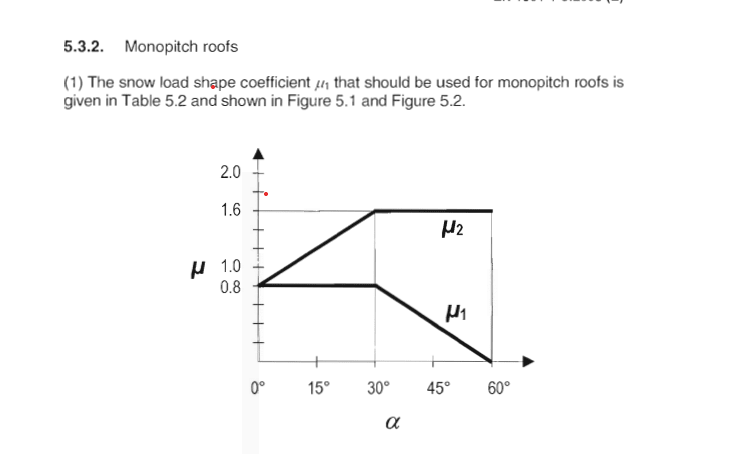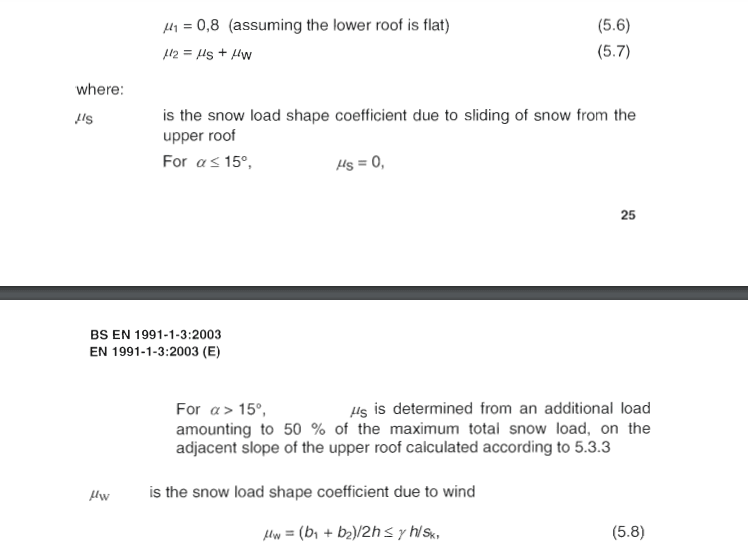Hello!
I'm learning how to calculate snow loads per Eurocode. In calculating, two factors are introduced: mu_1 and mu_2. Mu_1 is a factor relating the characteristic snow load to design value based on the slope angle of the roof. Its values are given in a graph:

The graph also gives values for mu_2. This factor is used, as far as I can see, in calculations involving another roof near a sloped roof, taking into account the snow drift from the higher, sloped roof into the lower one. This situation is described in section 5-3-6 of Eurocode 1-3, snow loads. In this section, the following formula is given:

Here the factor mu_2 is given as a sum of two factors, mu_w and mu_s, taking into account the different contributions from wind drift of snow from the upper roof and sliding of snow from the upper roof, respectively.
Now, these two methods for calculating mu_2 seem to be different, the one in the graph is a function of roof slope, while the other takes the geometry of the upper and lower roofs into account as a whole. **Are these mu_2 factors even the same?** And how do the two methods relate? I have one example of calculation of one sloped roof next to a flat one, and the procedure from 5-3-6 is used. So when are the values from the first graph used?
I'm learning how to calculate snow loads per Eurocode. In calculating, two factors are introduced: mu_1 and mu_2. Mu_1 is a factor relating the characteristic snow load to design value based on the slope angle of the roof. Its values are given in a graph:

The graph also gives values for mu_2. This factor is used, as far as I can see, in calculations involving another roof near a sloped roof, taking into account the snow drift from the higher, sloped roof into the lower one. This situation is described in section 5-3-6 of Eurocode 1-3, snow loads. In this section, the following formula is given:

Here the factor mu_2 is given as a sum of two factors, mu_w and mu_s, taking into account the different contributions from wind drift of snow from the upper roof and sliding of snow from the upper roof, respectively.
Now, these two methods for calculating mu_2 seem to be different, the one in the graph is a function of roof slope, while the other takes the geometry of the upper and lower roofs into account as a whole. **Are these mu_2 factors even the same?** And how do the two methods relate? I have one example of calculation of one sloped roof next to a flat one, and the procedure from 5-3-6 is used. So when are the values from the first graph used?
